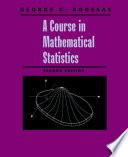
Techniques of Problem Solving
The purpose of this book is to teach the basic principles of problem solving, including both mathematical and nonmathematical problems. This book will help students to ... translate verbal discussions into analytical data. learn problem-solving methods for attacking collections of analytical questions or data. build a personal arsenal of internalized problem-solving techniques and solutions. become ``armed problem solvers'', ready to do battle with a variety of puzzles in different areas of life. Taking a direct and practical approach to the subject matter, Krantz's book stands apart from others like it in that it incorporates exercises throughout the text. After many solved problems are given, a ``Challenge Problem'' is presented. Additional problems are included for readers to tackle at the end of each chapter. There are more than 350 problems in all. This book won the CHOICE Outstanding Academic Book Award for 1997. A Solutions Manual to most end-of-chapter exercises is available.
- ISBN 13 : 9780821806197
- ISBN 10 : 082180619X
- Judul : Techniques of Problem Solving
- Pengarang : Steven George Krantz,
- Kategori : Mathematics
- Penerbit : American Mathematical Soc.
- Bahasa : en
- Tahun : 1997
- Halaman : 465
- Halaman : 465
- Google Book : https://play.google.com/store/books/details?id=ZuCOcD7zVIwC&source=gbs_api
-
Ketersediaan :
[POL1] G. Polya, How to Solve It, Princeton University Press, Princeton, 1988. [
POL2] G. Polya, Mathematics and Plausible Reasoning, in two volumes.
Princeton University Press, Princeton, 1954. [POK] G. Polya and J. Kilpatrick, The
Stanford ...









